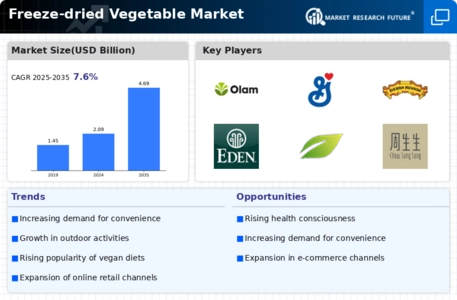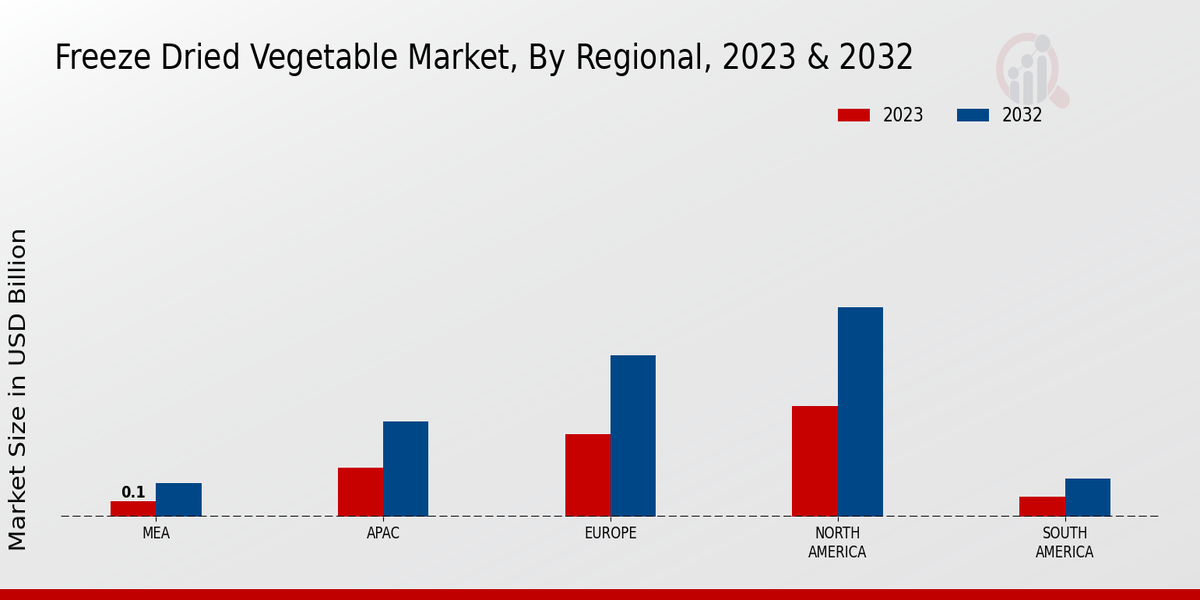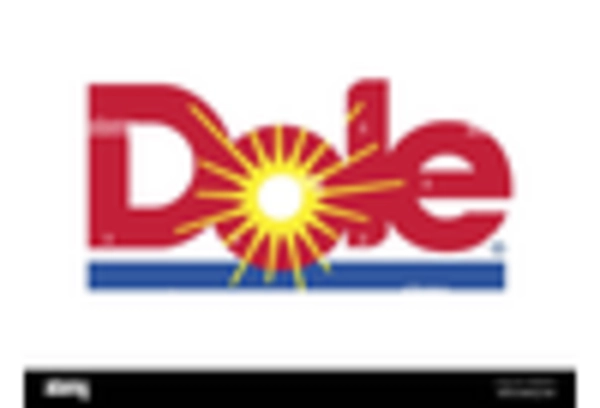The Freeze-dried Vegetable Market has experienced significant growth over recent years, driven by changing consumer preferences for healthy, convenient, and long-lasting food options. As the demand for clean-label products continues to rise, various companies are expanding their offerings while focusing on sustainability and nutrient preservation.
The competitive landscape is characterized by a mix of established players and emerging start-ups, each vying for market share through innovations in processing techniques, packaging solutions, and distribution channels.
Additionally, the increasing urbanization and busy lifestyles of consumers are propelling the popularity of freeze-dried vegetables as they offer a quick and nutritious alternative to conventional options, making the market dynamics truly competitive and multifaceted.
Olam Group has positioned itself as a significant player in the Freeze-dried Vegetable Market with its strong emphasis on quality and sustainability. The company's integrated supply chain approach allows it to control the various stages of production, ensuring higher quality and consistency in its freeze-dried products.
Olam Group invests heavily in research and development, which not only enhances its product offerings but also helps it stay ahead of consumer trends such as plant-based diets and health consciousness.
This company's vast network of sourcing and distribution capabilities enables it to efficiently respond to market changes and customer demands, offering a wide range of freeze-dried vegetable options that appeal to both retail and food service industries.
Additionally, Olam Group's commitment to ethical sourcing and sustainability aligns well with the increasing consumer focus on environmentally friendly practices, further strengthening its market position.
General Mills also plays a notable role in the Freeze-dried Vegetable Market, leveraging its established brand portfolio to cater to consumers who seek convenient meal solutions. The company utilizes innovative processing practices to ensure that its freeze-dried vegetables retain the maximum flavor, color, and nutritional value, appealing to health-conscious buyers.
General Mills focuses on storytelling in its marketing strategies, educating consumers about the advantages of incorporating freeze-dried ingredients into their diets, whether for home cooking or on-the-go meals.
The brand's dedication to quality and flavor, combined with its expansive distribution network, allows it to maintain a solid presence in various market segments, including snacks, ready-to-eat meals, and culinary applications. This strong brand equity, paired with a commitment to product innovation, positions General Mills favorably within the competitive landscape of freeze-dried vegetables.


















Leave a Comment